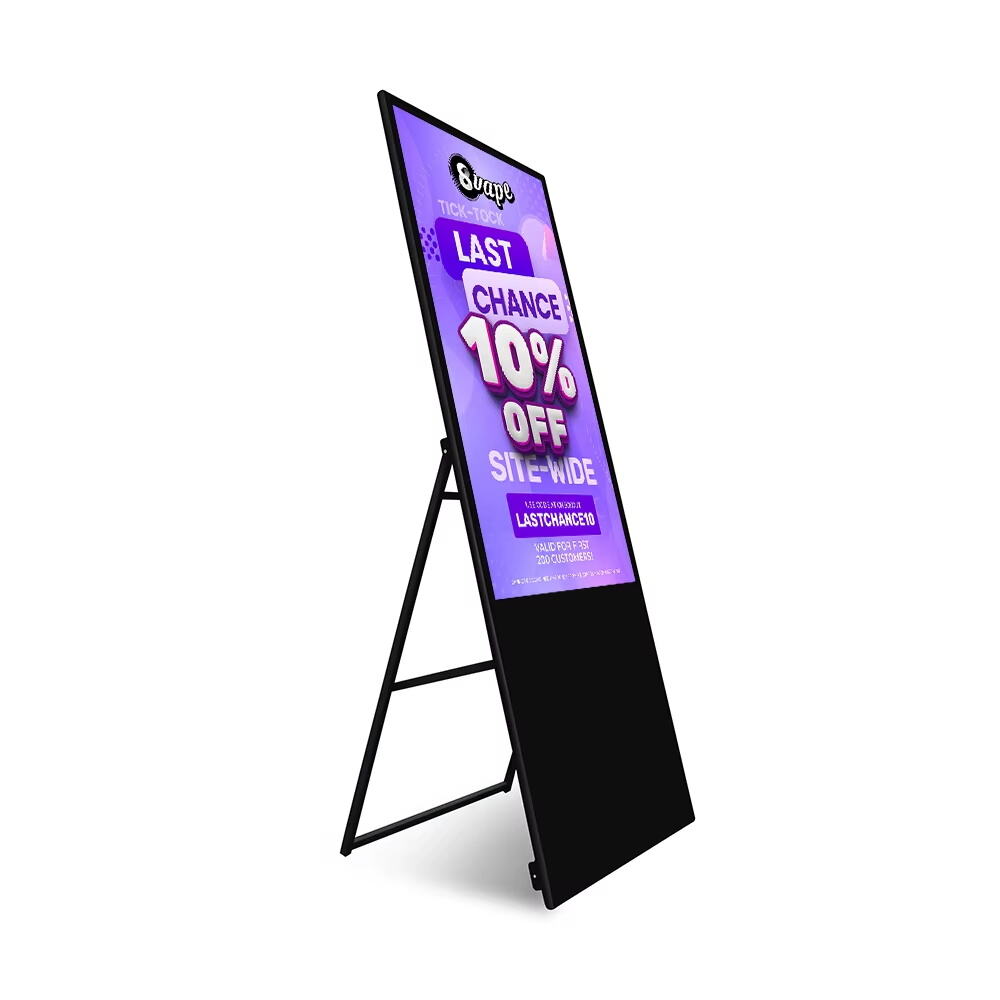
In an era where consumers are bombarded with information, standing out is more challenging than ever. Businesses that adopt an Advertising Display strategy position their brand at the forefront of customer attention. From bustling retail environments to transportation hubs, an Advertising Display creates dynamic touchpoints that captivate audiences at key decision moments. Investing in eye‑catching visuals and strategic placement enables brands to forge stronger connections, communicate messages quickly, and drive foot traffic—ultimately translating into measurable sales growth and enhanced customer loyalty.
Placing an Advertising Display in high‑traffic areas ensures that your brand message reaches a diverse audience throughout the day. Whether positioned near entryways, checkout counters, or transit corridors, these displays maximize opportunities to engage passersby. Effective location planning leverages pedestrian flow data to identify optimal zones—turning every glance into a potential conversion point and reinforcing brand recall.
What makes an Advertising Display impossible to ignore? Bold visuals and clear calls to action spark curiosity and invite further exploration. Incorporating motion graphics, vibrant color contrasts, and concise messaging draws the eye and encourages viewers to pause. When content is refreshed regularly—featuring promotions, new product launches, or user‑generated photos—audiences remain intrigued, leading to increased dwell time and a stronger connection with the brand.
An Advertising Display equipped with touchscreens, QR codes, or gesture controls transforms passive viewers into active participants. Shoppers can browse catalogs, take virtual product tours, or access loyalty rewards—right at the display. By combining digital interactivity with physical presence, brands cultivate memorable experiences that go beyond static signage and encourage consumers to explore further.
How agile is your marketing? Digital Advertising Displays allow instant content changes, ensuring promotions align with inventory levels, seasonal trends, or live events. Unlike printed materials that require reprints, digital content can be updated remotely with a few clicks. This flexibility reduces waste and enables marketers to react swiftly to emerging opportunities—such as flash sales or weather‑related offers—maximizing relevance at all times.
Traditional advertising channels often involve steep production and distribution costs. In contrast, deploying a network of Advertising Displays targets messages to specific locations and demographics without ongoing print expenses. Over time, the initial hardware investment yields dividends through lower per‑impression costs and the ability to run multiple campaigns on the same device. By analyzing which messages resonate best, marketers can optimize spend and boost ROI.
Are you still shipping printed posters and banners across multiple sites? With digital Advertising Displays, there’s no need for constant physical logistics. Content updates occur electronically, eliminating printing fees, shipping delays, and manual labor. This streamlined workflow not only cuts operating expenses but also reduces the carbon footprint associated with print production and transportation—supporting both budgetary and environmental goals.

Capturing data on viewer interactions and play times empowers brands to understand campaign performance in detail. Modern Advertising Displays integrate analytics platforms that track impressions, engagement rates, and dwell times. By reviewing which content drives the highest interaction, businesses can refine creative strategies, tailor messages for specific customer segments, and allocate resources more effectively.
How can you ensure your Advertising Display content remains fresh and impactful? Continuous A/B testing—comparing two versions of a visual or message—reveals which elements resonate most. Heatmap analysis shows where viewers focus their attention, guiding adjustments to design layouts. Combining these insights with sales data provides a holistic view of how Advertising Displays influence purchase behavior, enabling data‑backed decisions that elevate overall campaign success.
Advertising Displays come in a range of form factors suited for diverse environments. Indoor models feature high‑resolution screens and slim profiles ideal for retail aisles, lobbies, and event spaces. Outdoor units boast weatherproof enclosures and enhanced brightness to combat glare and maintain visibility under direct sunlight. This versatility ensures brands can maintain consistent messaging across both indoor and outdoor touchpoints, reinforcing campaign cohesion.
Whether rolling out a single display in a flagship store or deploying a fleet across multiple locations, Advertising Displays scale effortlessly. Centralized content management systems allow marketers to push tailored messages to individual screens or groups based on region, store size, or audience demographics. This flexibility supports localized promotions—such as store‑specific discounts—while preserving brand consistency across the broader network.
As brands seek to minimize environmental impact, many Advertising Displays now incorporate energy‑saving features. LED backlighting and ambient‑light sensors adjust screen brightness based on surrounding conditions, reducing power consumption without sacrificing visual quality. Some systems offer power‑down schedules during off‑hours, further lowering utility costs and carbon emissions—aligning marketing efforts with corporate sustainability goals.
Beyond operational efficiency, eco‑conscious manufacturers are producing Advertising Displays with recyclable chassis and modular components. Certifications such as EPEAT and ENERGY STAR provide third‑party validation of a display’s environmental performance. By selecting certified equipment, companies demonstrate commitment to responsible procurement and can communicate these credentials to eco‑minded customers, enhancing brand reputation.
Advertising Displays are evolving to become integral parts of omnichannel marketing strategies. By linking digital signage to mobile apps or social media feeds, brands craft unified experiences that bridge online and offline touchpoints. For instance, a customer scanning a QR code on a display might be directed to an app‑exclusive offer—driving engagement across platforms and reinforcing brand loyalty through cohesive storytelling.
How personalized can your in‑store messaging become? Advanced Advertising Displays leverage AI‑powered cameras and analytics to tailor content based on viewer demographics—such as age group or gender—while preserving privacy through anonymized data. Real‑time personalization increases relevance, making messages more compelling and improving conversion rates. As machine learning algorithms refine audience profiles, displays continually adapt content to maximize impact.
An Advertising Display uses digital screens to present dynamic content that can change instantly, whereas traditional signage relies on static prints that require manual replacement for updates.
Short videos, animations, countdown timers, and real‑time social media feeds drive higher engagement. Clear, concise messaging with bold visuals ensures viewers grasp information quickly.
Yes. Most modern systems support integration via APIs with CMS platforms, CRM systems, and analytics tools—enabling centralized control and data synchronization.
Use built‑in analytics to track impressions, engagement rates, and dwell times. Correlate these metrics with sales figures or foot traffic data to evaluate ROI and optimize future content.

Copyright © 2025 Shenzhen YJCen Technology CO.,Ltd. All rights reserved. - Privacy policy